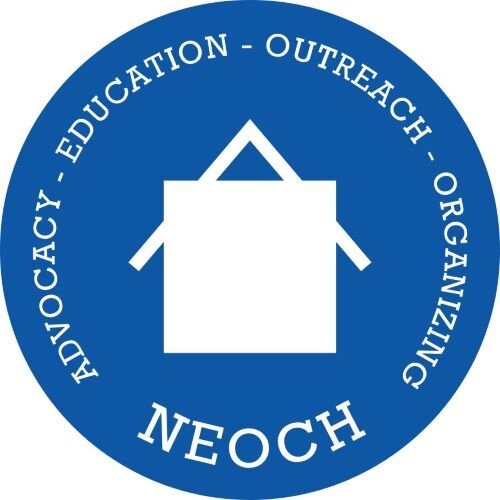Homeless of Cleveland Offer Positive Solutions
The Northeast Ohio Coalition for the Homeless (NEOCH) has been conducting a program called “Creative Solutions” for the past two years. The initiative is designed to push communities to begin to discuss poverty and offer solutions.
The program began by assembling groups of homeless people at various locations throughout the city. The first step was to determine what the current status of social services and economic opportunities were in greater Cleveland. Those gathered addressed the question of where the greatest needs in the community exist and how those needs are being met. This evolved into the second step of identifying gaps in the current framework. Those gaps included insufficient transportation, housing, and unresponsive shelters. Finally, procedures and steps toward implementing these recommendations were created.
Homeless involvement in all three of these steps is the key to the “Creating Solutions” program. Those who live on the streets are well acquainted with the current state of homelessness in Cleveland. Each day they confront the obstacles to finding housing, a job, transportation, or a nutritious meal. Therefore, the best way to tackle these problems is to involve homeless in the identification, solution, and implementation of these solutions. The attached document is the end result of this process. The next step is to bring together the political, business, and social service leaders of Cleveland with the homeless of Cleveland in an effort to begin the implementation process. Together they will review the gaps in current systems, proposed solutions, and best ways to implement the recommendations.
Only through an all-inclusive collaboration between community leaders and customers of social service organizations can we effectively reduce poverty and end the cycle of homelessness in Cleveland
Background
One of the highest priorities of the Northeast Ohio Coalition for the Homeless (NEOC) is to amplify the voices of homeless people. In 1993, NEOCH agreed to sponsor publication of The Homeless Grapevine, today a statewide voice for homeless people. In 1996, NEOCH initiated a series of bimonthly “Creative Solutions” meetings with homeless people in downtown Cleveland that have continued into 1998. An important outcome of these meeting is the following list of priorities identified by homeless participants and adopted by NEOCH for advocacy in 1998 and 1999.
THE PRIORITIES OF CLEVELAND’S HOMELESS POPULATION INCLUDE: DECENT, SAFE, AND STABLE HOUSING—
The highest priority
Without decent and safe housing that provides privacy and security, homeless persons are always at risk. Without extended stable housing, services provision is virtually impossible.
Recommendations:
- Local Public Housing Authorities should grant priority eligibility to homeless persons both “on the street” and “in shelters.”
- Emphasis should be placed on the provision of transitional and permanent housing to permit adults to focus their time and energy on nonhousing needs, including training and employment opportunities leading to self-sufficiency. Many homeless persons suffer from long-term disabilities, both physical and mental. Permanent, assisted living is the only solution that will assure decent, safe, and stable housing for them.
EMPLOYMENT AND TRAINING OPPORTUNITIES
The surest path to homelessness for those with work experience is a job loss and/or living in poverty. The best prevention for homelessness is full-time jobs that pay “living wages” that place households above the poverty line.
- Create and expand job clubs for homeless persons, including persons recently released from prisons. Currently, only 24 slots are allotted for homeless persons. A more realistic number would be in the range of 150 to 200 slots in downtown Cleveland alone.
- Establish a temporary services agency on a non-profit basis, with government support, to provide homeless persons with counseling, “living wage” temporary jobs, and links to both training and permanent employment.
- Make the provision of Adult Education to homeless and near-homeless people in poverty a priority for Cleveland Public Schools and area community colleges. This includes outreach programs—providing GED and vocational educational classes—in central places where homeless persons can come together in downtown Cleveland and in Cleveland’s low-income neighborhoods.
- Create a mentoring program for homeless persons consisting of formerly homeless persons.
PROVISION OF SERVICES
Homeless people have multiple needs for services including but not limited to shelter and meals, medical and emergency treatment, alcohol and drug treatment, employment and training, transportation, and legal representation. The near homeless need preventive services including but not limited to domestic violence and crisis intervention, counseling on eviction and foreclosure rights, and interim financial assistance to pay for rent and/or mortgage payments until household incomes are stabilized.
- Homeless persons, the “customers” of service providers, want a greater voice in the management of service provision. Current provision is a one-way street with few providers listening. For both homeless and near-homeless people, participation in activities central to their survival and self-sufficiency is a form of empowerment and a win-win solution for provider and beneficiary.
- Homeless and near-homeless people need timely, accurate, and correct information about service availability across the board. Such information should be readily available at shelter and meal sites, service providers, and from public sources including the police, court system, and public libraries.
Shelter and service providers also need better information on their “customers” and their particular needs in order to effectively serve and refer them to other service providers. The federally sponsored ANCHOR program in Cleveland is a start in the right direction. Further, NEOCH believes that local standards should be developed to ensure better quality of provision. Participants in setting local standards should include, at a minimum, shelter and service providers, homeless “customers,” and the City of Cleveland-Cuyahoga County Office of Homeless Services. In this process, standards developed in other U.S. cities should be reviewed for their applicability and appropriateness to the Cleveland area and Northeast Ohio.
Copyright for the Homeless Grapevine NEOCH October-November 1998
